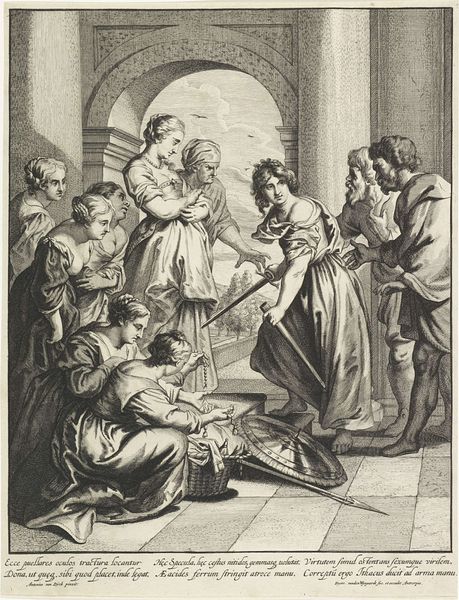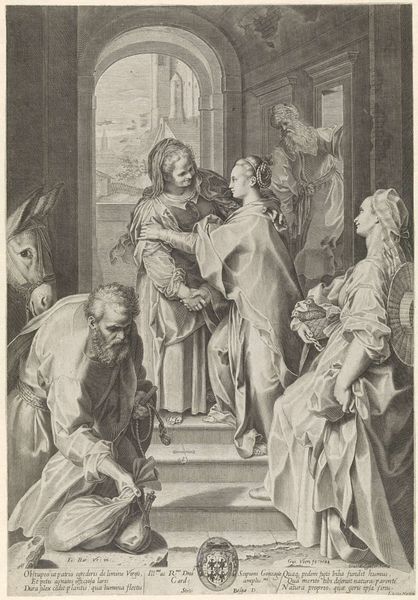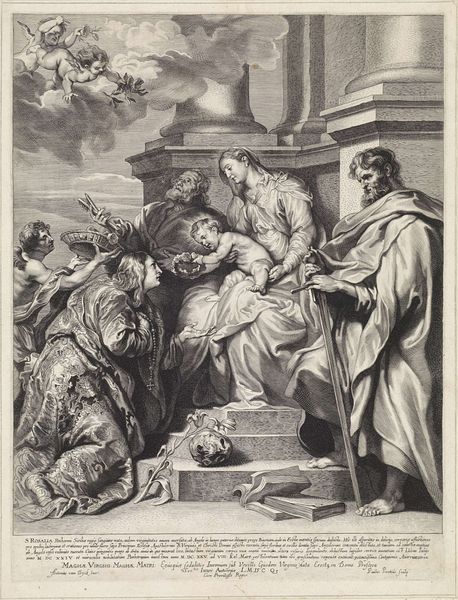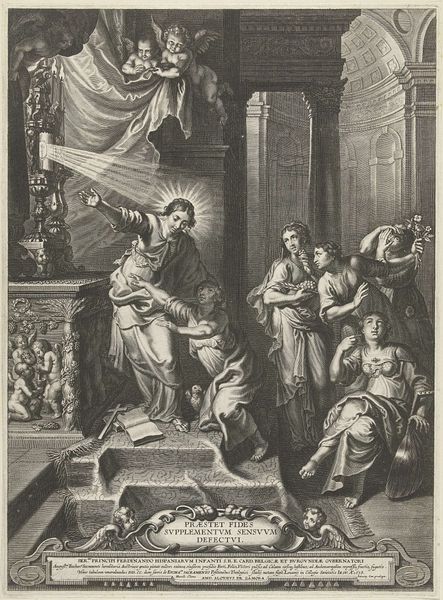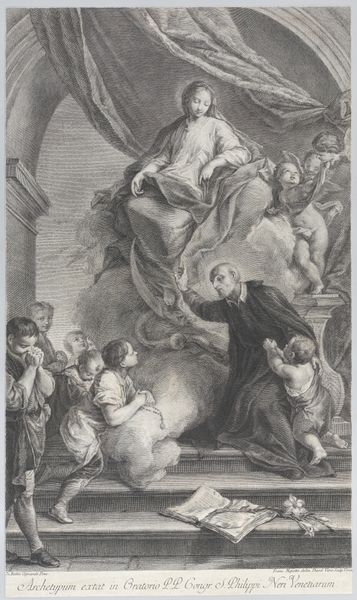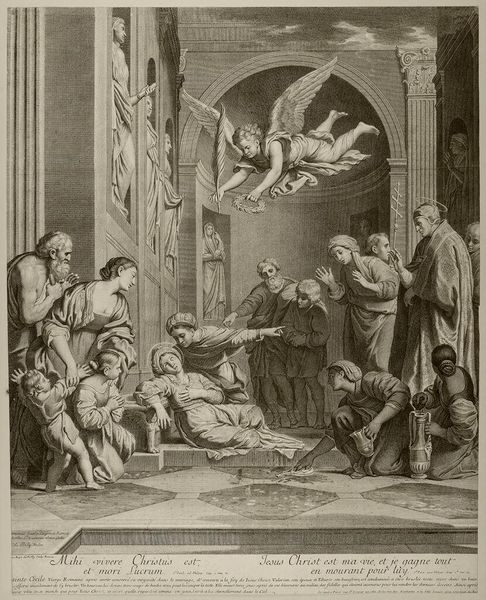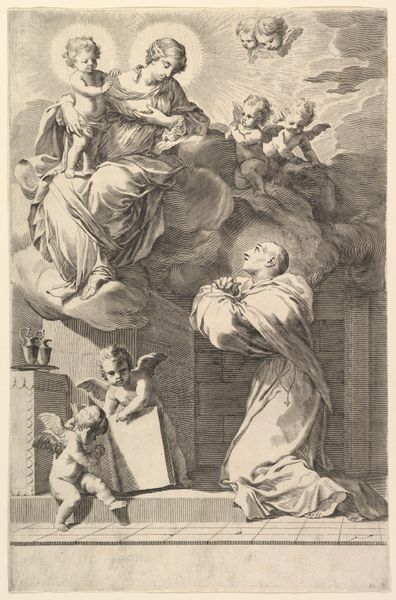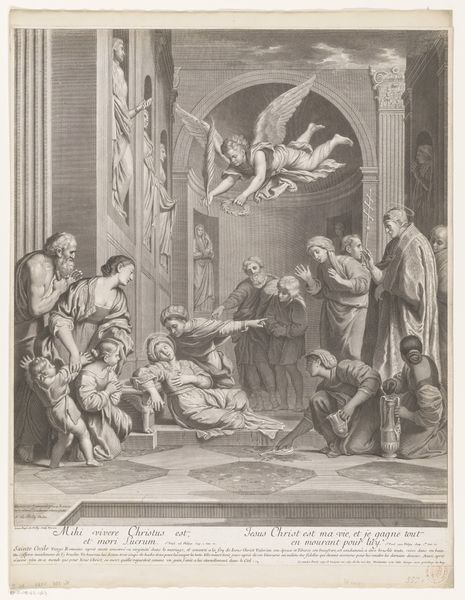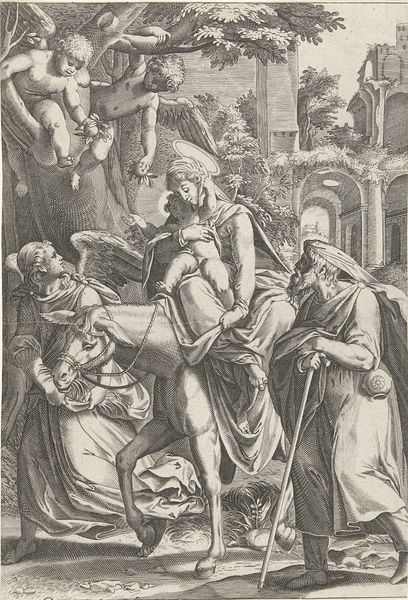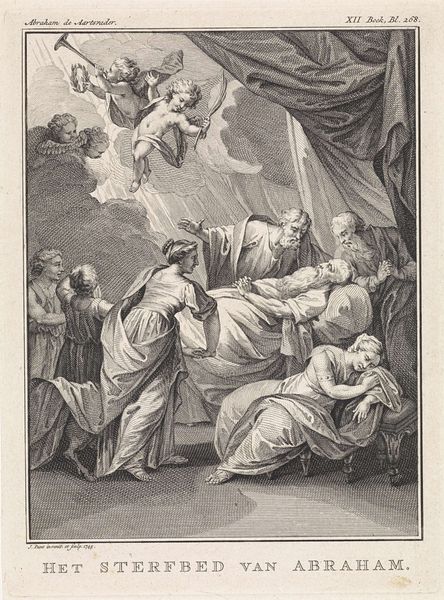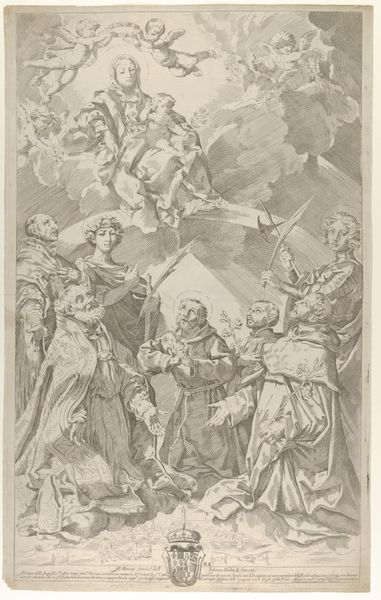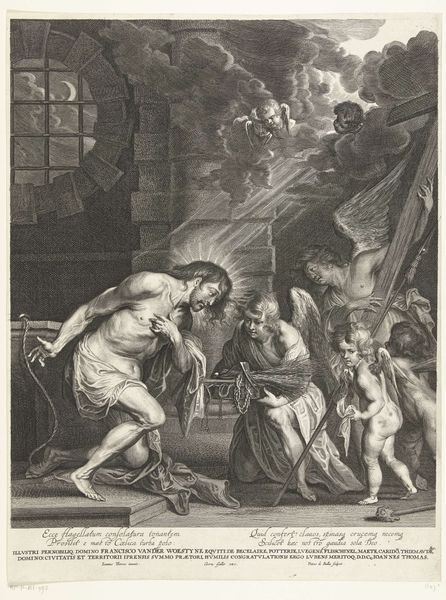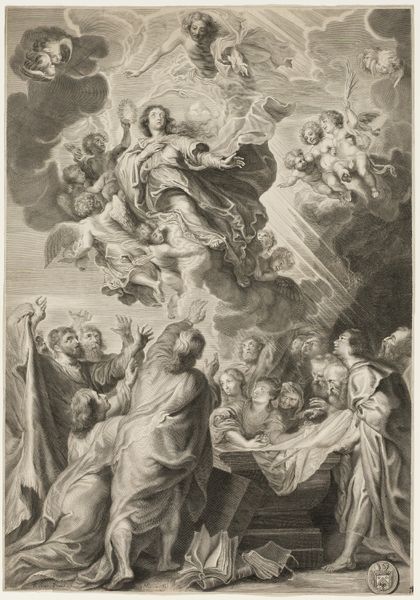
painting, oil-paint
#
portrait
#
narrative-art
#
baroque
#
painting
#
oil-paint
#
figuration
#
oil painting
#
christianity
#
painting painterly
#
history-painting
Copyright: Public domain
Curator: Bartolomé Esteban Murillo's "Death of the Inquisitor Pedro de Arbués," painted in 1664, captures a moment of brutal violence in striking baroque style. Editor: The painting exudes an atmosphere of impending doom. The shadowy background heightens the sense of terror, focusing all attention on the figures locked in this deadly dance. The scale is impressive. Curator: Absolutely, note the dramatic diagonals employed to amplify the movement. The angel descends from the upper left, mirroring the thrust of the assailants' weapons. Consider the dynamism between light and shadow, highlighting key figures while obscuring others, creating a spatial imbalance—a distortion of reality, if you will. Editor: The symbols here are potent. We see the palm frond, sign of martyrdom carried by the angel, juxtaposed with the daggers of the assassins. It's a clear visual argument: earthly violence versus heavenly reward. The book and the extinguished candle further speak to a life violently ended. Curator: Quite so. Let’s not ignore the very visible impasto that lends depth and tactility, heightening the painting's sense of drama. Moreover, the interplay of the color palette–the earth tones of the assassins against the ethereal blues and whites of the angel—serves to accentuate this dichotomy between earthly and divine justice. Editor: I think there’s an uncomfortable tension in romanticizing this assassination. Though Arbués was an Inquisitor, responsible for horrific acts himself, Murillo still frames him as a martyr. The angel, the cherubs...they sanctify the act, complicating our modern sensibilities. Curator: An interesting paradox indeed, and a stark reflection of the complex relationship between power, religion, and artistic patronage in seventeenth-century Spain. Murillo doesn't necessarily condone; he visually translates, reifying theological ideologies in pictorial language, challenging our preconceived notions of faith. Editor: Looking at the composition and its layered iconography, it reminds me how art continues to mediate our most fraught historical narratives. Curator: Precisely, and on that disquieting, reflective note, perhaps we ought to move on to our next selection.
Comments
No comments
Be the first to comment and join the conversation on the ultimate creative platform.
